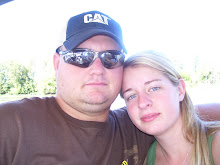So I got this little gem in my inbox today from a close friend:
***********************************
I'm sure those of you who aren't in the cattle business don't understand the
issues here. But to those of us who's living depends on the cattle market,
selling cattle, raising the best be ef possible... this is frustrating.
As far as my family, we don't eat at McDonald's much (Subway is our choice
of fast food), but this will keep us from ever stopping there again, even
for a drink.
The original message is from the Texas Cattle Feeders Association
American cattle producers are very passionate about this.
McDonald's claims that there is not enough beef in the USA to support their
restaurants. Well, we know that is not so. Our opinion is they are looking
to save money at our expense. The sad thing of it is that the people of the
USA are the ones who made McDonald's successful in the first place, but we
are not good enough to provide beef.
We personally are no longer eating at McDonald's, which I am sure does not
make an impact, but if we pass this around maybe there will be an impact
felt.
Please pass it on. Just to add a note:
All Americans that sell cows at a livestock auction barn had to sign a paper
stating that we do NOT EVER feed our cows any part of another cow. South
Americans are not required to do this as of yet.
McDonald's has announced that they are going to start importing much of
their beef from South America . The problem is that South Americans aren't
under the same regulations as American beef producers, and the regulations
they have are loosely controlled.
They can spray numerous pesticides on their pastures that have been banned
here at home because of residues found in the beef. They can also use
various hormones and growth regulators that we can't. The American public
needs to be aware of this problem and that they may be putting themselves at
risk from now on by eating at good old McDonald's.
American ranchers raise the highest quality beef in the world and this is
what Americans deserve to eat. Not beef from countries where quality is
loosely controlled. Therefore, I am proposin g a boycott of McDonald's until
they see the light.
I'm sorry but everything is not always about the bottom line, and when it
comes to jeopardizing my family's health, that is where I draw the line.
I am sending this note to about thirty people. If each of you send it to at
least ten more (30 x 10 =
300) ...
and those 300 send it to at l east ten more (300 x 10 = 3,000) ... and so
on, by the time the message reaches the sixth generation of people, we will
have reached over THREE MILLION consumers!
I'll bet you didn't think you and I had that much potential, did you? Acting
together we can make a difference. If this makes sense to you, please pass
this message on.
David W. Forrest, Ph.D ., PAS, Dipl.
ACAP Department of Animal Science
Texas A&M University
Phone (979) 845-3560
Fax (979) 862-3399
2471 TAMU
College Station, TX 77843-2471
*********************************
This was my reply (can you tell I'm trying to be nice?):
I think that's a bunch of crap personally. :P The USA's standards on raising beef are incredibly loose compared to Europe's. We get to use all kinds of chemicals and hormones and insecticides. Plus, blood & bone byproducts from cattle are fed to chickens whose byproducts are fed back to cattle which has the potential to spread disease just like feeding cattle to cattle. Mad cow disease can potentially be spread that way, that's why Europe outlawed all of that type of feeding. Just my two cents! :)
*********************************
How stupid! The whineass big cattle ranchers are getting mad because they're losing their market, so they turn it in to an "imported cattle is bad for you" bit. Oh please. Maybe they should wake up and learn to give the consumer what they want (through small-scale quality cattle raising) and then they wouldn't have so many problems. I am all for Made in the USA, but on this one I have no sympathy.
Thoughts?







































